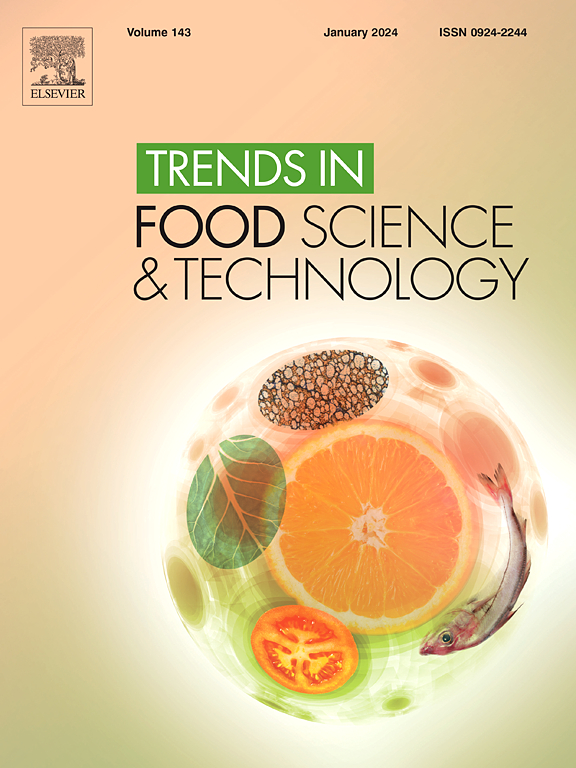基于序列的食品微生物群落特征:智能检测食品微生物的灵丹妙药还是廉价的肮脏行为?
IF 15.1
1区 农林科学
Q1 FOOD SCIENCE & TECHNOLOGY
引用次数: 0
摘要
基于序列的方法是表征食品和食品加工设施中微生物群落的一种快速、高通量的方法。近年来,这种方法已被广泛用于微生物群落的表征或特定微生物的检测。它们部分地取代了基于文化的方法,但它们的局限性往往被忽视。本文简要概述了基于序列的方法的优点和局限性,主要涉及基因扩增子测序的分类分辨率有限,PCR偏差扭曲定量关系,缺乏死细胞和活细胞的分化,以及宏基因组组装箱的完整性和污染。我们还提供了智能微生物检测的创新方法的观点,(i)整合基于序列的方法和(高通量)基于培养的方法;(ii)将富集培养与纳米孔测序和活碱基召唤相结合,以实现快速检测;(iii)使用当前的生态学概念和最新的生物信息学工具来识别细菌菌株;(iv)采用元基因组序列杂交组装。结论所建立的智能微生物检测框架充分利用了19世纪的微生物学方法和21世纪的测序技术,可提高食品中病原菌、发酵微生物和腐败微生物检测的准确性、分辨率和灵敏度。本文章由计算机程序翻译,如有差异,请以英文原文为准。
Sequence based characterization of microbial communities in food: The panacea for smart detection of food microbes or dirty deeds done dirt cheap?
Background
Sequence-based methods are a rapid and high-throughput approach to characterise microbial communities in food and food processing facilities. Such methodologies have been widely used for characterisation of microbial communities or for detection of specific microbes the past years. They have partially replaced culture-based approaches, but their limitations are often overlooked.
Scope of this review
This review briefly outlines advantages and limitations of sequence-based methods, which mainly relate to the limited taxonomic resolution of gene amplicon sequencing, PCR bias that distorts quantitative relationships, the lack of differentiation of dead and viable cells, and the completeness and contamination of metagenomic assembled bins. We also provide a perspective on innovative approaches for smart microbial detection that (i) integrate sequence-based methods and (high throughput) culture-based methodology; (ii) use enrichment culture in combination with nanopore sequencing and live basecalling for rapid detection; (iii) use current ecological concepts and up-to-date bioinformatics tools to identify bacterial strains; and (iv) employ hybrid assembly of metagenomics sequences.
Conclusions
The proposed framework for smart microbial detection makes best use of both world – 19th century microbiological methods and 21st century sequencing technology, to improve the accuracy, resolution and sensitivity of detection of pathogens, fermentation microbes and spoilage microbes in food.
求助全文
通过发布文献求助,成功后即可免费获取论文全文。
去求助
来源期刊

Trends in Food Science & Technology
工程技术-食品科技
CiteScore
32.50
自引率
2.60%
发文量
322
审稿时长
37 days
期刊介绍:
Trends in Food Science & Technology is a prestigious international journal that specializes in peer-reviewed articles covering the latest advancements in technology, food science, and human nutrition. It serves as a bridge between specialized primary journals and general trade magazines, providing readable and scientifically rigorous reviews and commentaries on current research developments and their potential applications in the food industry.
Unlike traditional journals, Trends in Food Science & Technology does not publish original research papers. Instead, it focuses on critical and comprehensive reviews to offer valuable insights for professionals in the field. By bringing together cutting-edge research and industry applications, this journal plays a vital role in disseminating knowledge and facilitating advancements in the food science and technology sector.
 求助内容:
求助内容: 应助结果提醒方式:
应助结果提醒方式:


